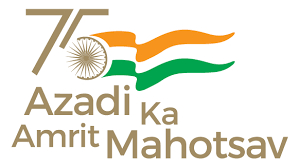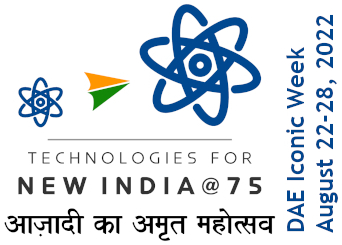Homi Bhabha National Institute (HBNI) “Outstanding Doctoral Student Award – 2022”
The Academic Council of HBNI has conferred the Outstanding Doctoral Student Award-2022 in Physical Sciences to Dr. Ritesh Ghosh of Saha Institute of Nuclear Physics. Dr. Ghosh completed his Ph.D work under the guidance of Prof. Munshi G Mustafa.
Thesis Title : A study on some aspects of hot and dense QCD matter
Abstract : Quark-gluon-plasma (QGP), the strongly interacting deconfined matter, is believed to be created in the early universe, a few microseconds after the Big Bang. This extreme matter has been discovered in relativistic heavy ion colliders. Various experimental and theoretical studies are also ongoing to unveil the precise properties of the produced matter. After the nuclear impact the system is in non-equilibrium and gradually expands and cools down and finally undergoes a phase transition to hadronic medium. The QGP state can also be present in the core of the neutron star where the matter density is very high. In recent times, several studies have shown that very high magnetic field (~1014 T) can be produced in non-central heavy ion collisions (HIC). So, more interests have been grown towards this field to study the QGP properties in presence of background magnetic field. In this thesis, the characteristics of various anisotropic systems created in several stages of heavy ion collisions have been addressed. Two cases are mainly explored: One is the momentum space anisotropy created due to the rapid longitudinal expansion after the nuclear impact as the system expands along the collisional direction making the system much cooler in the longitudinal direction than the transverse direction. The other one is the anisotropy due to the background magnetic field. The momentum space anisotropy is studied by modeling of the non-equilibrium distribution function from the equilibrium case by suitable squeezing or stretching. Constructing the general structure of gauge boson, the collective modes and instability are obtained for ellipsoidal momentum anisotropy case.
On the other hand, the magnetized QGP and hadronic matter is another direction of study which is explored in this thesis. The presence of the magnetic field introduces extra scale in the system. Theoretically, one can work in different regimes of magnetic field strength. Initially after the collision, very strong magnetic field is created. In the calculation one can use lowest Landau level (LLL) approximation as the magnetic field pushes the higher Landau levels to infinity compared to the LLL. The magnetic field decays rapidly with time depending upon the conductivity of the medium and one can work using weak field expansion in this cases. We have calculated chiral susceptibility and photon damping rate in hot magnetized QCD/QED medium using Schwinger propagator and effective hard thermal loop (HTL) fermion propagator in weak field limit. The damping rate of the hard photon is associated with the mean free path of photon and hard photon production rate in QGP whereas, chiral susceptibility is an important quantity to study the chiral phase transition. In strong magnetic field, we have studied shear viscosity of hadronic matter using linear sigma model (LSM). We observe anisotropic transport coefficient in presence of magnetic field. Our study is not limited to strong and weak field limits, we have calculated heavy quark antiquark potential in the regime of arbitrary magnetic field strength i.e. considering all the Landau levels. Heavy quarkonia i.e. bound state of quark antiquark pair is an important signature of QGP and we have calculated the imaginary part of the Heavy Quark potential and the dissociation of heavy quarkonia in presence of arbitrary magnetic field.




